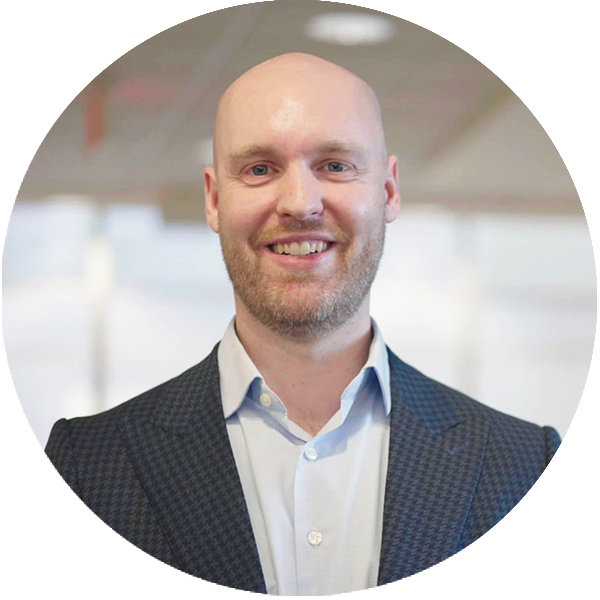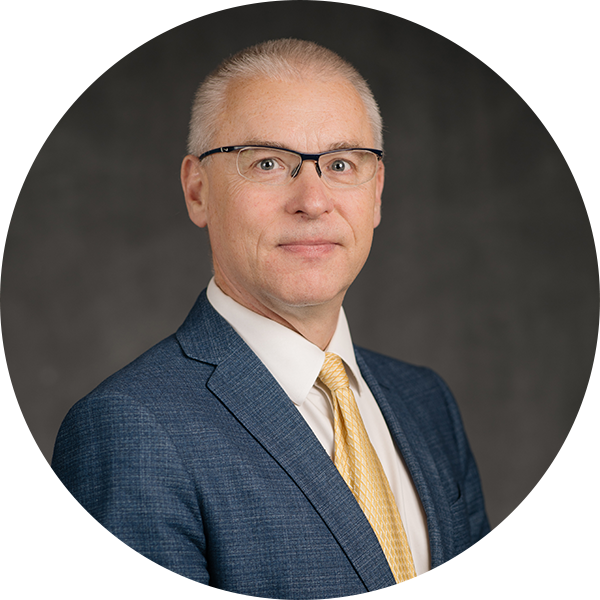Innovative surgery helps this dad keep up with his boy
One set of knee surgeries is daunting enough.
Chance Murphy, 28, faced a second just 10 years after the first. This time, the procedures offered the possibility of correcting the birth defect causing pain and loss of mobility.
Even better, Dr. Kyle Martin would employ a novel, less invasive technique to lessen recovery time.
And best of all, Chance, of Clearwater, wouldn’t have to venture to the Twin Cities for the repair —Dr. Martin lives and works in nearby St. Cloud.
Still, it took something even more compelling to convince Chance to undergo a procedure called arthroscopic trochleoplasty:
The possibility of being able to one day match his one-year-old boy stride for stride.
“His name is Hudson Michael Murphy,” Chance says proudly. “He means everything to me.”

“I thought the potential here was huge.”
Dr. Martin, one of the first to perform the innovative surgery in this country, could probably have practiced anywhere.
But the orthopedic surgeon fell in love with the vision and mission of CentraCare M Physicians Orthopedics in St. Cloud.
CentraCare not only built a state-of-the-art health care facility there, but also partners with the University of Minnesota to open a new Medical School campus.
That affiliation—where Dr. Martin is part of a world-class team as a researcher and an assistant professor—sealed the deal for the Winnipeg native.
He says: “It’s really a big family approach where you can bounce ideas off of a whole group of other physicians and surgeons.”

The goal is less pain, more function
Dr. Martin diagnosed Chance with bilateral trochlear dysplasia.
It’s a relatively rare condition, which is why, with Chance’s first surgery, it might’ve been overlooked.
Chance, Dr. Martin says, lacked the normal groove in his thighbones that would keep his kneecaps in place.
Even from his early days on the playground, Chance recalls his kneecaps suddenly sliding off to the side and the pain stopping him in his tracks.
“It limited me on a lot of things growing up,” he says.

“The doctors did the best they could at the time.”
Chance had those first surgeries in his teens, procedures that tightened his tissues in hopes that they’d help keep his kneecaps in place.
That worked for a while. Chance, in fact, went on to realize a childhood dream: Working on a tank crew in the U.S. Army.
In time, however, the effectiveness of the surgeries diminished as did his career options.
And then came that little boy.
Chance says: “If you’re having a bad day, his smile definitely gives you something to be happy about.”

Bringing complex care to Central Minnesota
Dr. Martin learned how to do an arthroscopic trochleoplasty in Europe where it’s much more common.
Instead of a huge incision, Dr. Martin makes just four little poke-holes.
Through those openings, he’s able to insert a camera as well as the surgical tools to create those missing grooves.
Dr. Martin says: “The advantages for most patients, besides smaller scars, is a quicker recovery, less pain.”

The pain is gone
A few years down the road, Chance’s knees are doing so well he works as a security officer at the Monticello nuclear plant – a position that required he pass a running test.
Now, just to stay in shape, he runs one mile a day on his way to five – and even makes headway on a bucket list of hiking each of Minnesota’s parks.
And then there’s Hudson. Maybe, Chance says, he can teach him a game he once could only dream of playing: baseball.
He says: “Without the surgery, I’d have felt guilty that I wouldn’t be able to keep up with him.”
Global Influences in a hometown clinic
Kyle Martin, MD, discusses how his training abroad shaped the way he cares for patients.
PUTTING DISCOVERY INTO PRACTICE
M Physicians are an extension of the University of Minnesota Medical School. As Medical School faculty, they are always looking for new and better ways to treat patients, whether in the laboratory or the clinic. And through clinical trials, cutting-edge therapies are sometimes available to patients when the standard of care is no longer enough.
What is Academic Medicine?
Most medicine is practiced within what is called “the standard of care.” Simply put, “standard of care” is the treatment that is commonly accepted for treating illness. This is a good thing! It means that patients receive treatments that are known to be generally effective and reliable.
The goal of academic medicine is to treat patients while looking for better therapies. It takes the toughest problems from the clinic and looks for solutions in our research. Many of our physicians — leaders in their fields — are also scientists.
When a patient faces an illness that requires treatment that exceeds the standard of care, academic medicine can provide access to newer therapies.

University of Minnesota Medical School
Orthopedic Surgeon
CentraCare


